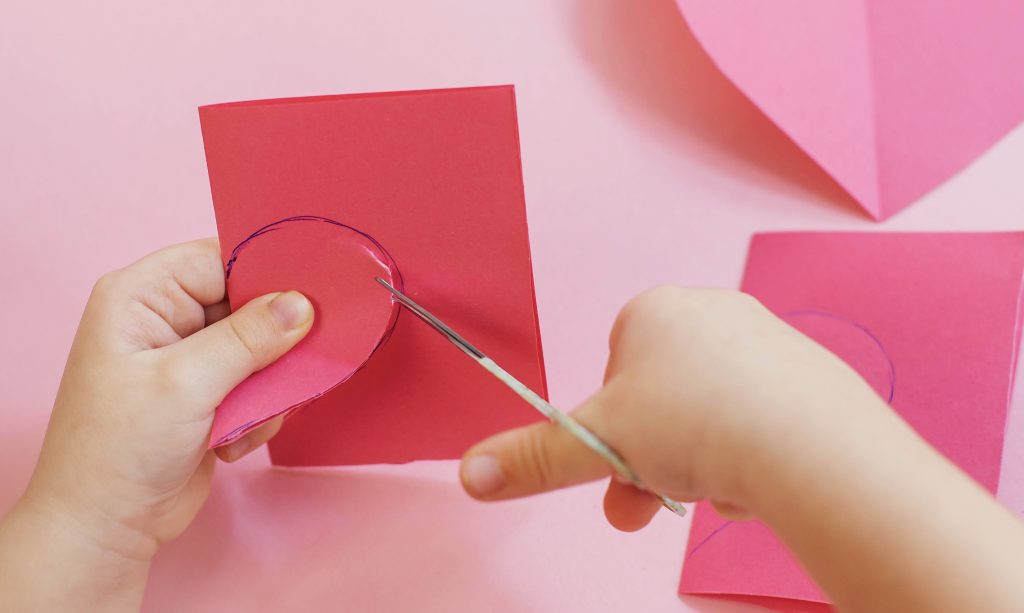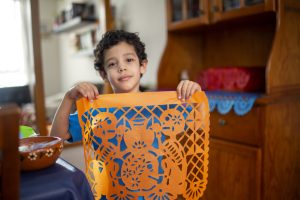Around Valentine’s Day, heart-shaped pictures appear in many homes, classrooms, and community spaces. Take advantage of these images to help children explore key early math concepts about shapes, lines, and symmetry. This exploration supports children’s understanding that shapes have distinct features and properties. Here are some ideas for exploring math in Valentine’s decorations.
Discuss Features of Heart Shapes
Find or create hearts and use them to talk about shapes. (See the video above for examples.) To create your own paper heart, fold a piece of paper in half so the edges meet. Starting from the side closest to the fold, draw half of a heart.
Encourage children to discuss what they see, such as the curved line at the top of the heart, or how the curve slowly becomes straighter as it reaches the bottom. If children have difficulty identifying features of the shape on their own, try modeling an example or directing their attention to a specific part of the shape. Then cut along the line.
Predict How Shapes Change
Before unfolding the heart, ask children to predict what the folded shape will look like when it is unfolded:
- How wide or tall will it be?
- Will there be any points on the heart? Where, and how many?
- Will the heart be symmetrical?
Look for Shape Symmetry
Unfold the heart you created. What do you notice? If you split this heart vertically down the middle, the two sides are symmetrical, or exactly the same on both sides. This is not true if you split the heart in half horizontally! In fact, it is difficult to divide a heart exactly in half horizontally because there is more of the shape on the top of the heart than on the bottom. This means that this heart has only one line of symmetry, unlike squares and rectangles, which have many lines of symmetry.
Compare different examples of hearts to discuss which hearts are symmetrical and which are not. You can explore symmetry further by folding hearts vertically in half to see if the two sides are, in fact, identical.

Make Hearts of Different Sizes
If using standard 8 ½ by 11 paper, fold one piece vertically in half and another piece horizontally in half. This will naturally lead to some differences in height and width among the hearts that children draw and cut out. Compare the shapes before and after unfolding and discuss how they differ from each other.
Plan the next heart by asking questions like: How can we make a heart that is shorter or longer than the first one you made? Can we make a heart that will fit inside this big heart? Make several hearts of increasing sizes so that children can compare them.
Ideas for Further Learning
Use our PDF download to:
Make detailed comparisons. See different examples of lines and symmetry to spark conversations.
Combine shapes into new shapes. Have children explore how shapes can be combined to create new shapes. Use tangrams or our template to construct your own heart puzzle from triangles and semi-circles. These puzzles provide opportunities to explore ideas of space and place as children physically and mentally rotate pieces to fit inside the puzzle.
Explore geometry. The closest geometric shape to the typical Valentine’s Day heart is the cardioid. Introduce cardioids and compare them to the hearts you created. Are cardioids symmetrical? Do they have points at the bottom? Do the sides of cardioids become straighter like hearts do?

Happy Valentine’s Day!



